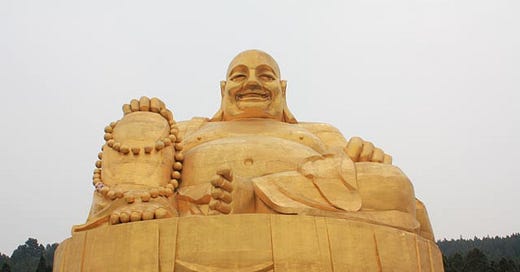Ep. 003: The Laughing Buddha and the Scowling General
When you visit a Chinese Buddhist temple, you may wonder, "Who's the fat guy? And who's that scowly looking dude behind him?" Find out in this episode!
He's usually called a Buddha, but he's not one--yet.
He's the Buddhist version of Santa Claus.
He's the favorite garden ornament of thousands.
And in Japan, he's both a Bodhisattva and a "Lucky God"--but in very different guise.
He's the Laughing Buddha, and he's the main focus of "The Laughing Buddha and the Scowling General," Episode 003 of...
TEMPLE TALES!




